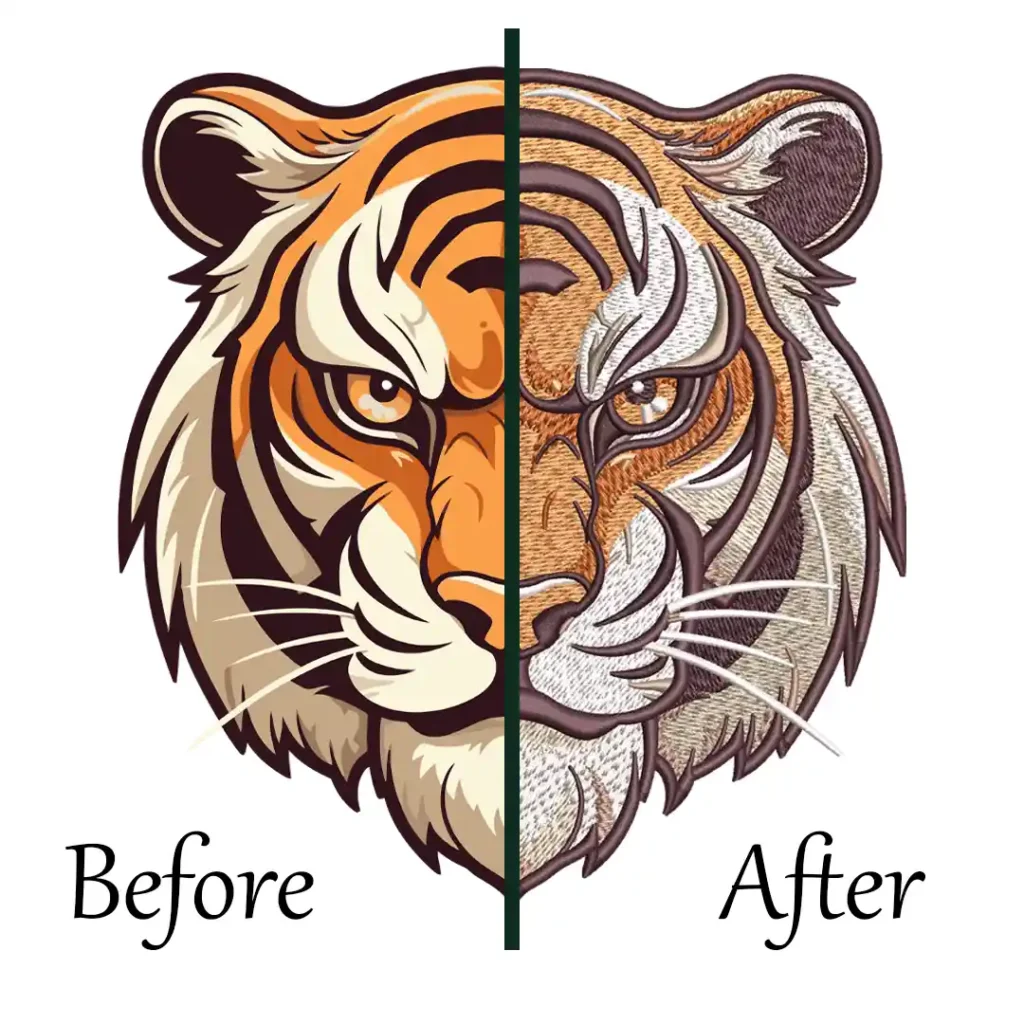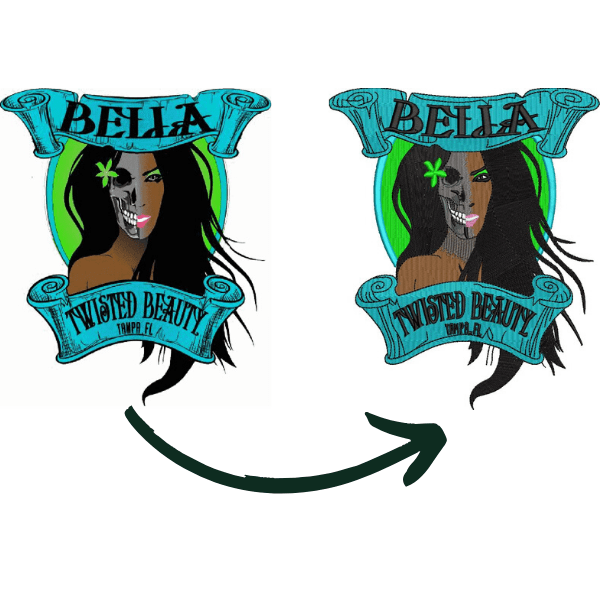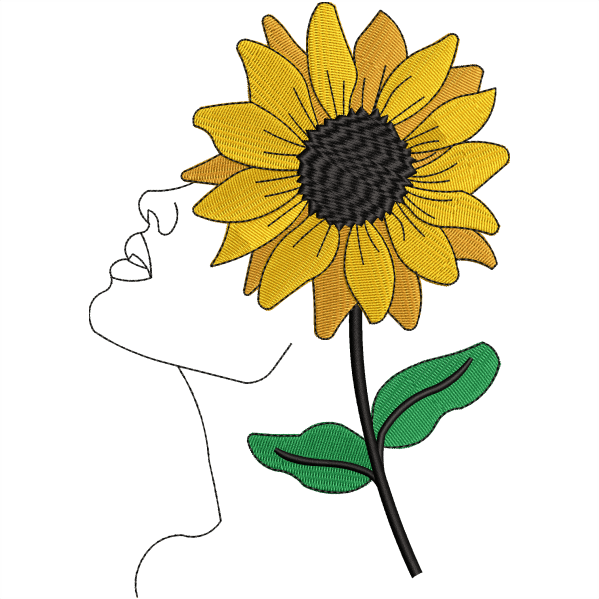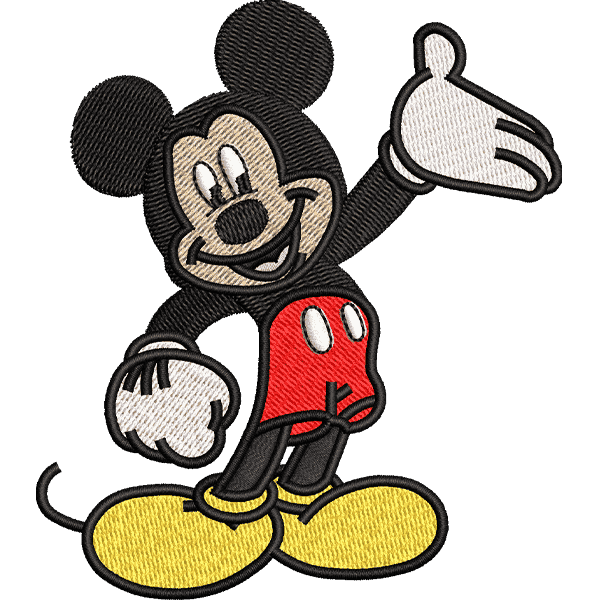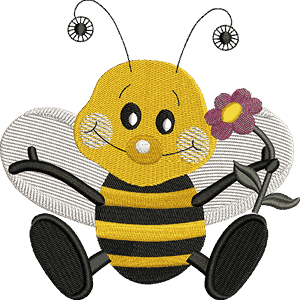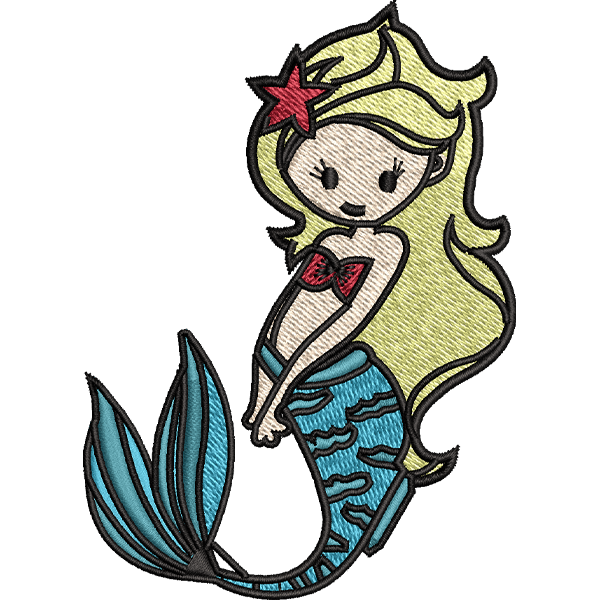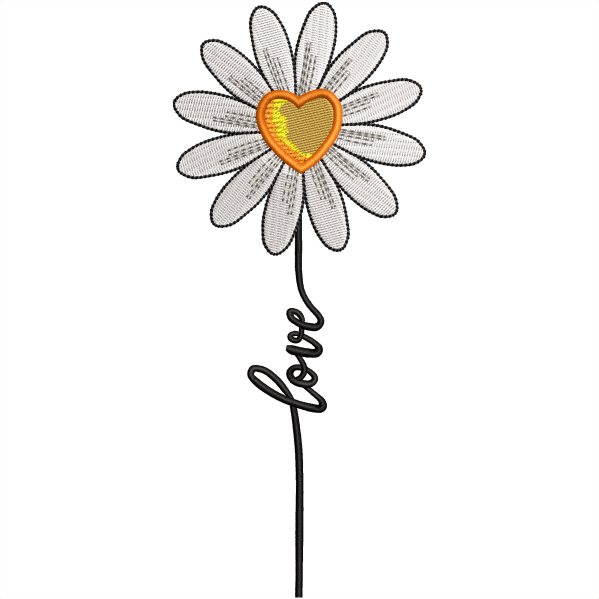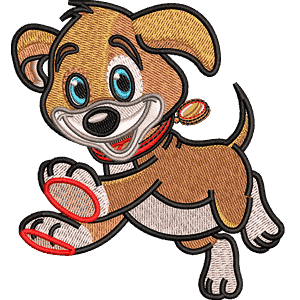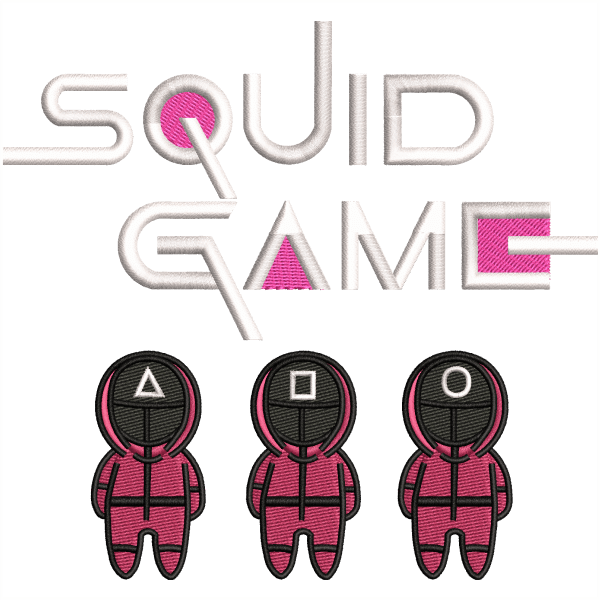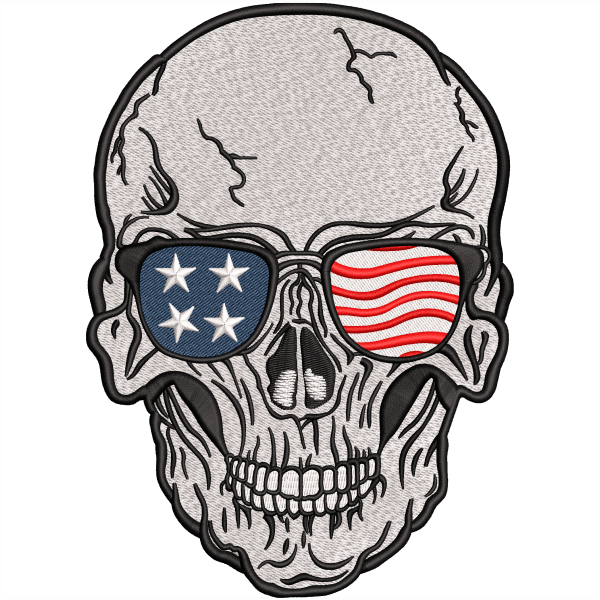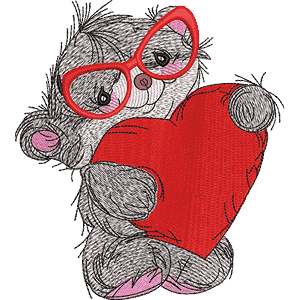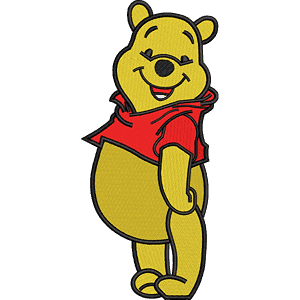In this article, we will discuss the types of machine embroidery file formats. An embroidery file is a type of file format that your embroidery machine reads to produce the design in the file. The file has important information that your embroidery machine would have to understand to produce the design correctly.
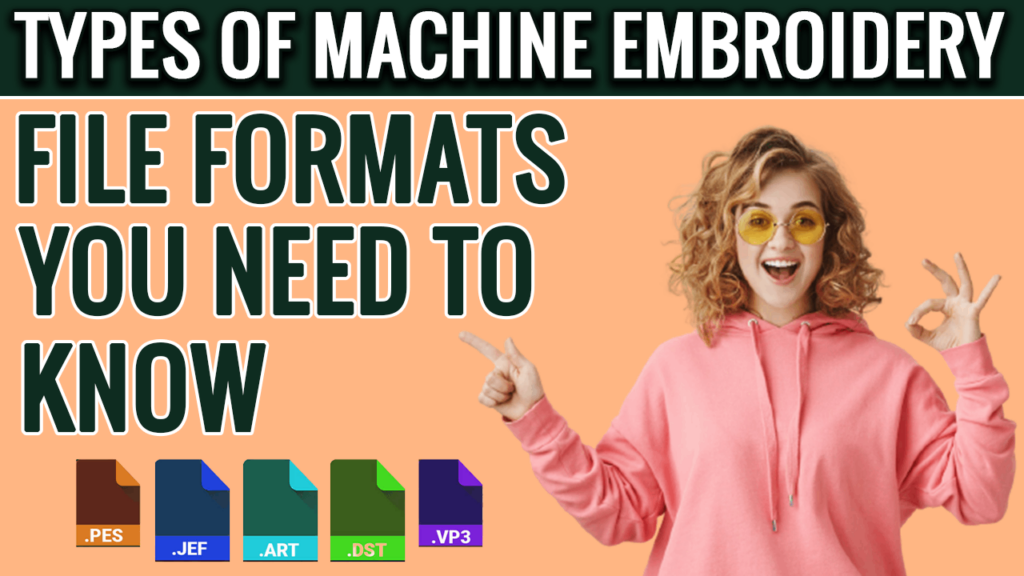
Types of Machine Embroidery File Format you need to Understand
Introduction:
Embroidery files contain important information like what color thread to use in specific areas of the design, also exact information about stitches, including:
- Type of stitch
- Stitch order
- Stitch density
- Stitch angle
- Stitching starting and ending points
Types Of Machine Embroidery File Format You Need To Understand
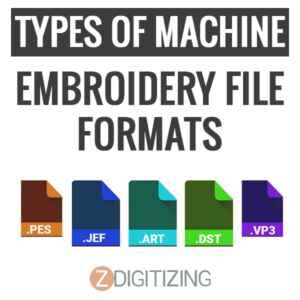
Are you an Embroider? Are you having trouble deciding which Embroidery File Format to use? Well, we understand that it is a tough decision. The practice of machine embroidery excites and fascinates everyone.
While it is all about craft, art, creativity, and making something real, it’s also a bit technical, requiring you to manipulate and control the digital machine embroidery files that the system reads. If you want to sew any design, you have to load it onto your embroidery machine. But what file format should you choose? What are the embroidery machine file formats?
This article covers all you need to know about the machine embroidery file format in this comprehensive overview. We will guide you, on which file you should use for your embroidery machine and dive into a few important expertise that every embroiderer should teach by explaining the main types of file formats.
Let’s start; first, we need to know about embroidery file format:
What Is A Machine Embroidery File Format?
An Embroidery machine file format includes a collection of commands and information for the embroidery machine to read to sew out a design effectively. First of all, it tells the embroidery system the wide variety of various colorations of thread to use, what those colorations are, and when to alternate colorations. Every thread color is aware of the sewing sample, the place to be stitched, and the density and period of the sewing.
Knowing all the facts that a machine embroidery file format stores, it ought to be self-obtrusive why machine embroidery file formats are extraordinarily distinct from graphic files formats like PDFs, SVGs, and JPGs. These Graphic files stock no data related to sewing and color patterns.
Click the link below to know about file formats briefly on Zdigitizing:
https://zdigitizing.com/machine-embroidery-file-formats/
As you might be wondering which file format will be suitable for your machine, for this, let’s dig into it:
Which File Format Is Suitable For Your Embroidery Machine?
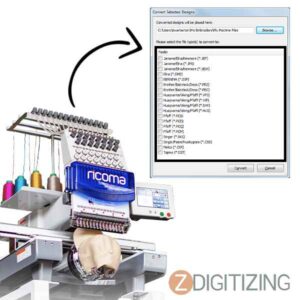
Making or finding the correct machine embroidery file you want is the most crucial step in sewing out an embroidery design. You must make sure that the design’s format is valid. Machines that embroider various threads use machines that read varying sorts of files.
So, if you want to understand which type of format your machine can read, you can ask your seller or have some general info about the format and your embroidery machine.
Here we go:
Some common types of Machine Embroidery File Formats:
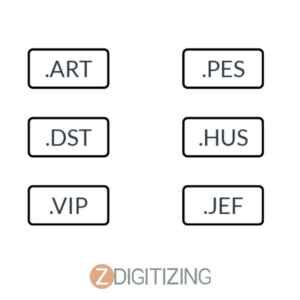
Every embroidery machine encodes various embroidery file format types.
So there are many file formats, and the six most common file formats are:
- ART: This file format is used by the Bernina machine.
- PES: A file format that is used by the Brother machine.
- DST: This file format is used by the Tajima machine.
- HUS: This file format is used by the Husqvarna machine.
- VIP: This file format is used by the New Pfaff machine.
- JEF: This file format is used by the Janome machine.
Some other file formats used by different machines are:
- Bernina uses ART42, ART50, and ART60 file formats.
- Melco uses CND, and EXP file formats.
- POEM uses CSD file format.
- GNC uses the DEM file format.
- Tajima uses DSB, DSZ file format.
- Wilcom uses EMB file formats.
- Elna uses EMD file format.
- Great Notions uses the GNC file format.
- Brother uses PEC, PHB, and PHC file formats.
- Kenmore uses SEW file format.
- Sunstar uses SST file format.
- Data Stitch uses STX file formats.
- Viking SE uses VP3 file formats.
- Singer uses XXX file format.
Machine Embroidery file format converters are used to convert one file format into another. This conversion is known as Batch conversion.
CLOSING LINE:
We hope this article will be helpful for you. If you want to digitize embroidery design you would need a professional like ZDigitizing, as digitizing is a complex process.
Zdigitizing is a digitizing embroidery company that provides complete digitizing and vector art services all over the world to businesses, industries, and corporations. Zdigitizing provides high-class, durable, and reasonable custom digitizing embroidery and vector art services. We have been delivering top-notch digitizing embroidery services for 20+ years.
So, if you need a digitizing or vector art service for your embroidery machine, with a super-fast turnaround and excellent quality, ZD will be your best choice. Just click the link below and get a free quote in less than 5 minutes.
Hope it will be helpful for you guys!
If there’s any question related to this article you can simply ask in the comment section and don’t forget to share with those you think might be helpful for them.
And finally, thanks for reading!
Frequently Asked Questions
Every embroidery machine reads the different types of file formats. However, most embroidery machines use these file formats:
- DST
- EMB
- EXP
Many types of formats can be used in Digitizer, but the most commonly used formats are:
- EXP
- HUS
- JEF
- KSM
pec – A stitch-based file format that is used by Brother and Babylock embroidery home sewing machines.
DST is the most common embroidery file format. DST’s full form is DATA STITCH TAJIMA because Tajima developed it originally. But, this type of file can be read by most embroidery machines. DST files mostly contain stitch commands that tell the machine how to stitch the design.

